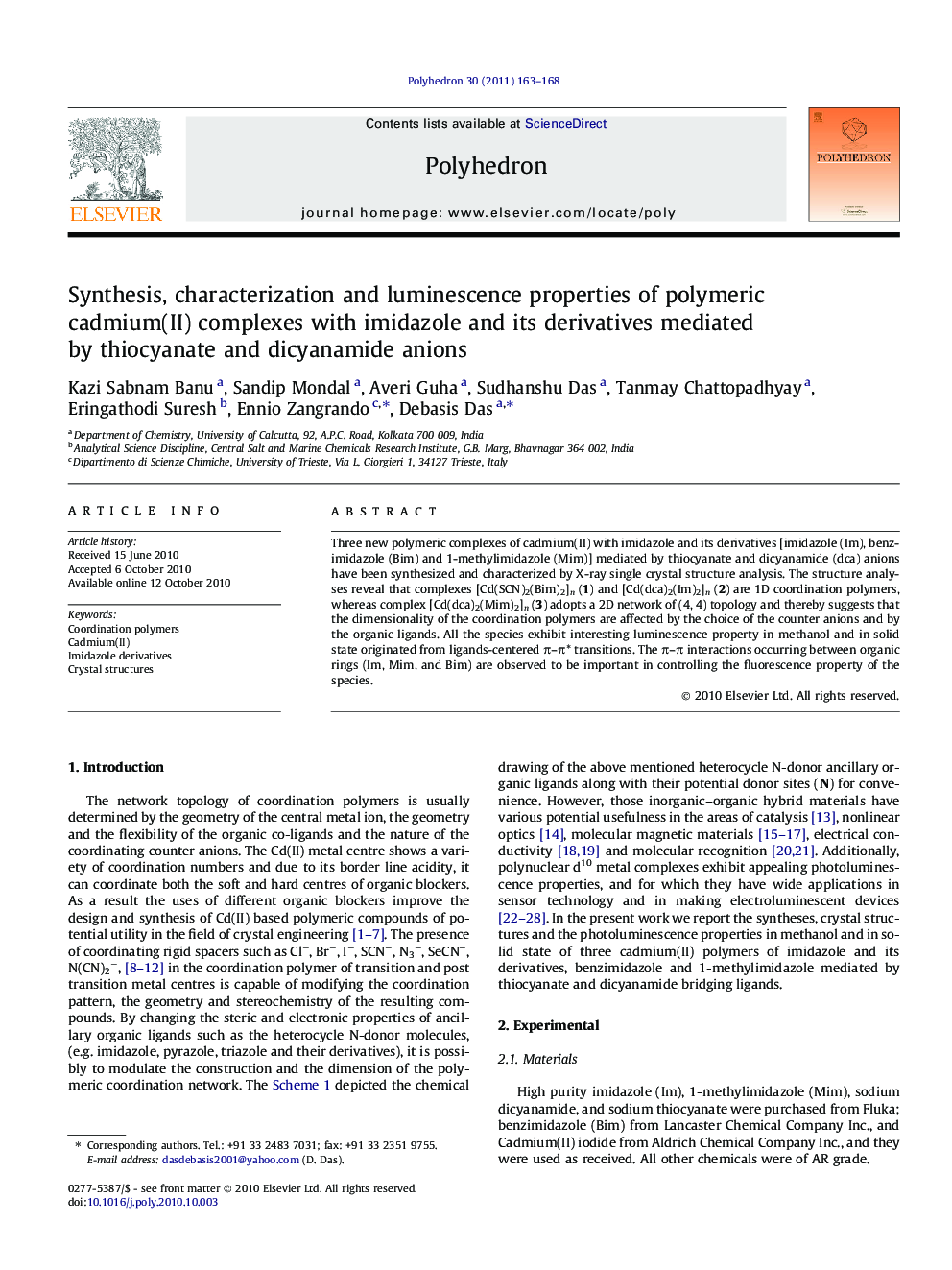| Article ID | Journal | Published Year | Pages | File Type |
|---|---|---|---|---|
| 1336477 | Polyhedron | 2011 | 6 Pages |
Three new polymeric complexes of cadmium(II) with imidazole and its derivatives [imidazole (Im), benzimidazole (Bim) and 1-methylimidazole (Mim)] mediated by thiocyanate and dicyanamide (dca) anions have been synthesized and characterized by X-ray single crystal structure analysis. The structure analyses reveal that complexes [Cd(SCN)2(Bim)2]n (1) and [Cd(dca)2(Im)2]n (2) are 1D coordination polymers, whereas complex [Cd(dca)2(Mim)2]n (3) adopts a 2D network of (4, 4) topology and thereby suggests that the dimensionality of the coordination polymers are affected by the choice of the counter anions and by the organic ligands. All the species exhibit interesting luminescence property in methanol and in solid state originated from ligands-centered π–π* transitions. The π–π interactions occurring between organic rings (Im, Mim, and Bim) are observed to be important in controlling the fluorescence property of the species.
Graphical abstractThree new coordination polymers of Cd(II) with imidazole, 1-methylimidazole and benzimidazole mediated by SCN/dca have been synthesized, characterized and their fluorescence activity in solid state and methanol were investigated. Complexes 1 and 2 exhibit 1D polymeric structure and complex 3 show a 2D layer structure. Complex 2 exhibits the highest quantum yield followed by 1 and 3 in methanol.Figure optionsDownload full-size imageDownload as PowerPoint slideResearch highlights► Three polymeric CdII with imidazole and its derivatives has been synthesized. ► Structural characterization reveals 1D and 2D polymeric networks. ► Fluorescence study in solid and methanol have been performed. ► The observed luminescence is a consequence of intraligand (π–π*) transition.
